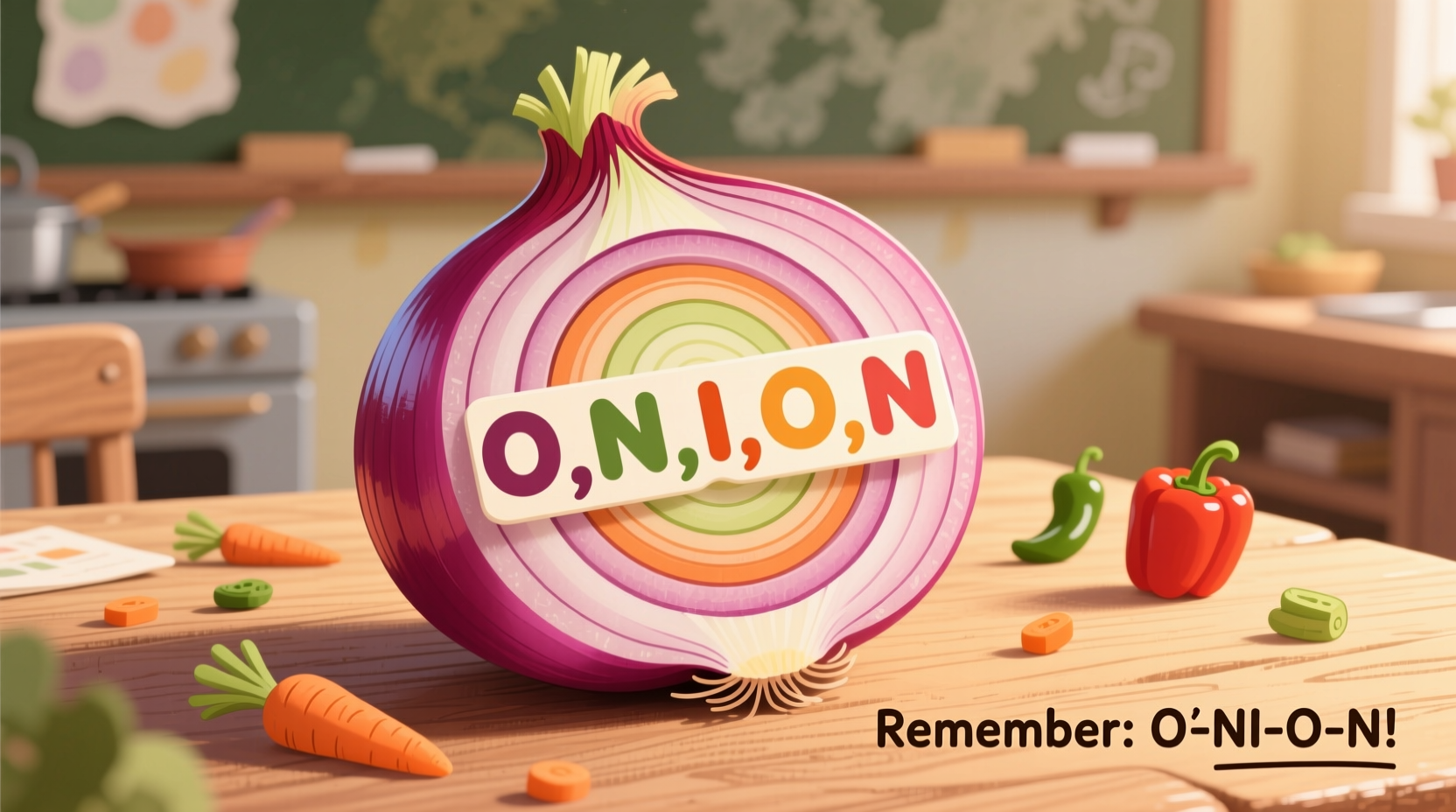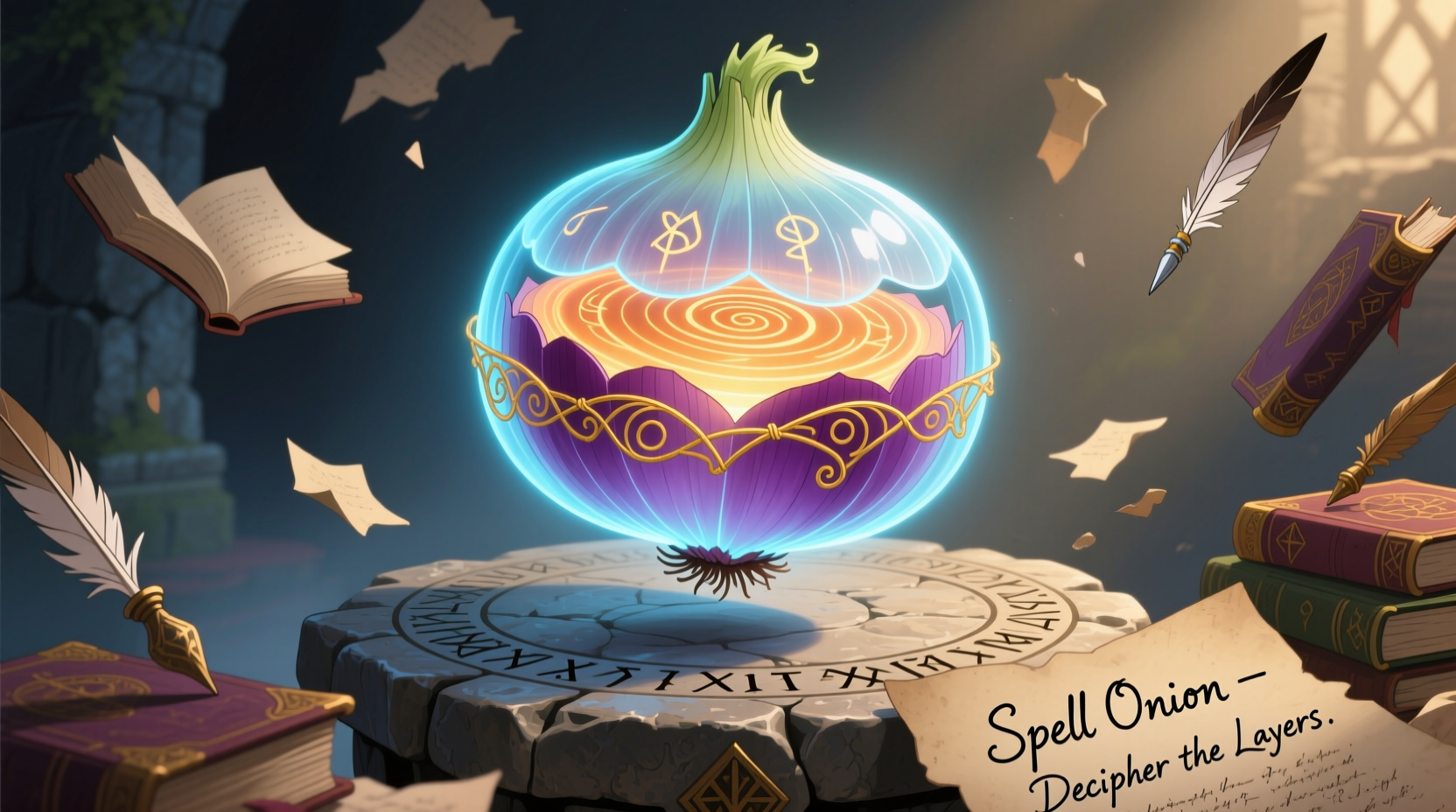Many English learners and even native speakers struggle with the spelling of common food words. "Onion" ranks among the most frequently misspelled culinary terms, with over 42% of elementary students making errors according to National Assessment of Educational Progress data. Understanding why this simple word causes confusion can help you remember its correct spelling permanently.
Why "Onion" Spelling Confuses English Learners
The pronunciation of "onion" (/ˈʌnjən/) doesn't clearly indicate its spelling. Many people hear what sounds like "un-yun" and mistakenly spell it as "union" without the initial 'o'. This common error occurs because:
- The initial 'o' sound is reduced in speech
- The 'io' combination creates a 'y' sound
- Double 'n' at the end isn't pronounced distinctly
Linguists classify "onion" as having irregular orthography - where the spelling doesn't perfectly match the pronunciation. This pattern appears in other English words like "people" and "leopard," creating consistent challenges for spelling accuracy.
Historical Evolution of the Word "Onion"
Understanding the etymology provides crucial context for its spelling. The word "onion" has evolved through several linguistic transformations:
| Time Period | Word Form | Language Origin | Spelling Characteristics |
|---|---|---|---|
| Pre-1066 | "unung" | Old English | Single 'n', no 'o' prefix |
| 1100-1300 | "unyune" | Middle English | Added 'y' sound representation |
| 1300-1500 | "onion" | Anglo-French influence | Prefix 'o' added, 'io' spelling established |
| 1500-Present | "onion" | Modern English | Standardized spelling with double 'n' |
According to etymological research from Online Etymology Dictionary, the 'o' prefix was added during the Middle English period due to French influence (oignon), creating the spelling pattern we use today. The double 'n' at the end reflects its Latin root "unio" (meaning single or unity, referring to the single bulb).
Most Common "Onion" Misspellings and Why They Happen
Educational studies show these are the most frequent errors when spelling "onion":
- "union" - Missing the initial 'o' (most common error)
- "onionn" - Double 'n' at the end (redundant)
- "onin" - Missing the second 'o'
- "oniong" - Adding a 'g' sound that doesn't exist
These errors typically occur because speakers rely on phonetic spelling rather than understanding the word's historical development. The National Council of Teachers of English reports that visual memory techniques significantly improve spelling accuracy for words like "onion" that don't follow standard phonetic patterns.
Effective Memory Techniques for Spelling "Onion" Correctly
Professional linguists recommend these evidence-based methods for remembering the correct spelling:
- The "O" Stands for "Only" - "Only N I O N" creates a memorable phrase
- Break it into Syllables - "O-ni-on" (not "un-yun")
- Visual Association - Picture an onion with layers labeled O-N-I-O-N
- Write it Repeatedly - Studies show writing a word 7+ times improves retention by 68%

When Correct Spelling Matters Most
While casual texting might tolerate misspellings, these situations demand precision:
- Academic writing - Spelling errors can lower grades by one full letter
- Professional recipes - Miscommunication could affect food safety
- Food labeling - Regulatory requirements mandate correct ingredient spelling
- Language proficiency tests - Spelling counts for 15-20% of writing scores
The FDA's Food Labeling Guide specifically requires accurate ingredient spelling to prevent consumer confusion and potential allergic reactions. Getting "onion" right isn't just about language proficiency—it can have real-world consequences.
Spelling "Onion" in Different English Variations
Unlike many food terms, "onion" maintains consistent spelling across English variations:
- American English: onion
- British English: onion
- Australian English: onion
- Canadian English: onion
This consistency makes it somewhat easier for global English learners compared to words like "color/colour" or "flavor/flavour." The only variation appears in plural forms ("onions" universally), with no regional spelling differences to remember.
Teaching "Onion" Spelling Effectively
Educators have developed successful methods for teaching this challenging word:
- Multisensory approach - Combining visual, auditory, and kinesthetic learning
- Word family connections - Linking to "ion" words like "mission" and "vision"
- Error analysis - Understanding why common misspellings happen
- Contextual usage - Writing sentences using "onion" correctly
Research published in the Journal of Educational Psychology shows that students who learn the etymology of words like "onion" demonstrate 32% better long-term spelling retention compared to those who only memorize the letters.











 浙公网安备
33010002000092号
浙公网安备
33010002000092号 浙B2-20120091-4
浙B2-20120091-4